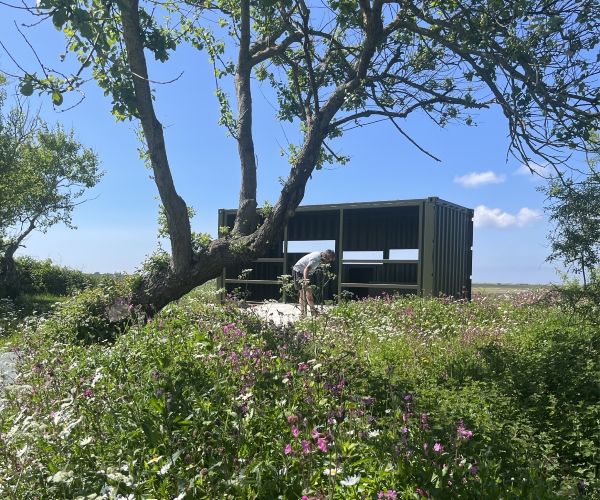- Turf
- Artificial
- Soil
- Timber
- Composite Decking
- Paving & Stone
Get In Touch With Our Experts Today!
Give us a Call! - Seed & Fertiliser
- Dressing
- Bark

May 31, 2023
There was a time when referring to a ‘wild’ garden was often a dig at the not-so-green-fingered homeowner. When they left their lawn to overgrow with long grass, weeds and a menagerie of wildflowers.
However, wildflower meadows are an important part of our natural ecosystem; providing habitats for wildlife and producing diverse types of turf which are compatible with the UK’s varying soils. When planned and planted right, wild gardens can look very pretty, adding pops of colour to your outdoor space year after year.
Essentially, a wildflower garden is a permanent patch of grass which contains a variety of grass and flower seeds. It often includes both annuals and perennials so you should have flowers blossom with the seasons. Your wildflower garden can occur naturally or be purposely designed, taking on any size or shape from simple borders to rolling meadows.
Like other types of turf such as Trident or Shade Tolerant. wildflower turf has been seeded and harvested ready to be delivered and rolled out straight onto your landscaping project. Our own GDT wildflower turf consists of 55 annual and perennial seeds in either easy-to-grow rolls or turf slabs. Meaning you can create a truly bespoke wildflower garden. But where to start?
The team have pulled together 3 easy steps to creating your own wildflower mini meadow:
Wildflower seeds and turf love the sun. So, look for a part of your garden which receives the most sunlight. Ideally somewhere quite open and not shaded by trees or structures. Also, consider where you want to view your wildflower patch. For instance, would you love to see it from your kitchen window, or would you prefer it by your outdoor seating area? Bear in mind, wildflowers are intended to attract bugs, bees and insects so if you’re a bit wary of these critters, it might be better to place your wildflowers further away.
The beauty of a wildflower garden is that it naturally requires minimal maintenance. So, if you want a complete wildflower lawn without the stress of mowing, you can. Any sized wildflower garden is great for the environment too, and the best bit is, even the smallest patch of wildflower turf can contain a large mix of seeds. Consider the size of your garden and start by sectioning off different parts to find the right size to complement the rest of your garden’s landscape.
Like all types of turf, the best way to get the most from your grass is in preparation! To prepare your soil, start by removing any existing turf and de-weed the area. Aerate the soil too, breaking up compacted areas and ensuring there’s sufficient drainage. Rake the soil to create an even surface and apply a loose layer of topsoil. You can then scatter your wildflower seeds or roll out your GDT wildflower turf . If it’s not raining, make sure you water thoroughly.
Autumn is an ideal season as that’ll give your turf time to focus on firmly anchoring in and developing a strong root system, rather than directing its energy into flowering. Come springtime, it’ll have everything it needs to fully bloom. Alternatively, you could lay your turf in early spring and within 4 weeks, your wildflowers will be flourishing.
Looking for some wildflower inspiration? Read our ideas below and find the right type of wildflower feature for you.
With an increase in industrial and residential developments, our natural wildflower meadows are rapidly diminishing. Destroying wildlife habitats and limiting pollination which impacts the diversity of fruits and flowers. As well as our countryside losing its natural floral beauty.
If we all start including a small wildflower area in our gardens, we’ll quickly grow numerous benefits for ourselves and the environment, such as:
If you’re ready to grow or are looking for some extra support for your wildflower landscape, get in touch with our friendly team today. We can offer the best advice to suit your garden and book your wildflower turf delivery straight away.
CALL US NOW ON 01234 818 253